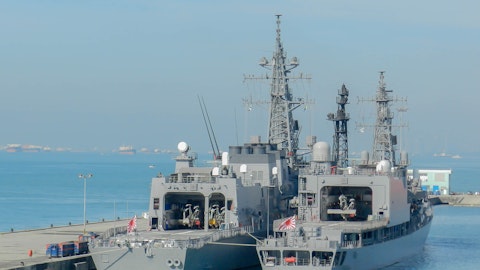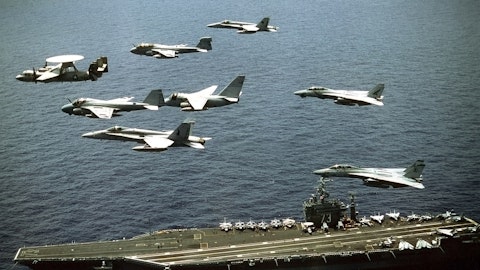We’re leaving bottlenecks and also finding issues earlier than perhaps we were previously giving us more time to react. We qualified some additional suppliers and negotiated additional LTAs. I think we did about 400 agreements last year with about $1.8 billion in annual spend. So again, giving our suppliers better visibility into our demand and what we’re doing. And then candidly, we’re taking some actions in our own house to better enable supply chain performance, small things like reducing the time it takes to place a PO to perhaps more complex things like engineering changes to improve the yields on some of our complex parts and ensuring we’ve got sort of a stable configuration as programs move from development into production. So those are all the things that we’re focused on continue to drive health and supply chain.
But you’re right, we’re going to need it to perform to hit these numbers we’ve got here in 2023 and beyond.
Greg Hayes: So Sheila, the other question you had there was on inflation. And I think, again, we the $2 billion of inflation is a real number we saw it last year. We were able to overcome it through cost reduction as well as some additional pricing. And again, we will see pricing benefits again in 2023, especially on the commercial aftermarket side. Keep in mind also on the defense side about 1/3 of our business is cost type, cost reimbursable and so some of that inflation gets passed automatically along to our customer at the Department of Defense. As I think about that $2 billion, right about $1.2 billion I think Chris said is product related and about $800 million of that is people cost. And that is a real number. We’ve got roughly $20 billion in compensation costs across RTX that’s about a 4% increase year-over-year for $800 million.
It’s a big number. But again, we’ve got plans in place for cost reduction both in the supply chain and in the factories as well as in the back office. And some of this transformation activity that Chris mentioned with the realignment of the businesses will also present us an opportunity to get after some of that cost. So it’s real, but we’ve got plans and I think we have more than provided for that in the guidance that Neil covered.
Sheila Kahyaoglu: Great. Thank you, both.
Greg Hayes: Thanks, Sheila.
Operator: Thank you. Our next question comes from the line of Ronald Epstein of Bank of America. Your question please, Ronald.
Ronald Epstein: Hey, yes. Good morning, everyone.
Greg Hayes: Hey Ron, good morning.
Ronald Epstein: Good question for you about this restructuring reorganization, I guess, in the defense business in Raytheon. I think we all understand that you’ll get cost synergies out of it. But if you look at RIS in the quarter with the sales down 5%, how does the reorganization boost sales synergies. I think that that’s the first question. And then the second question is, I mean it’s really I mean, how do you boost that? And then the second question is, is there some restructuring that actually has to go on in that portfolio? Because are there some businesses in there that are just structurally lagging?





